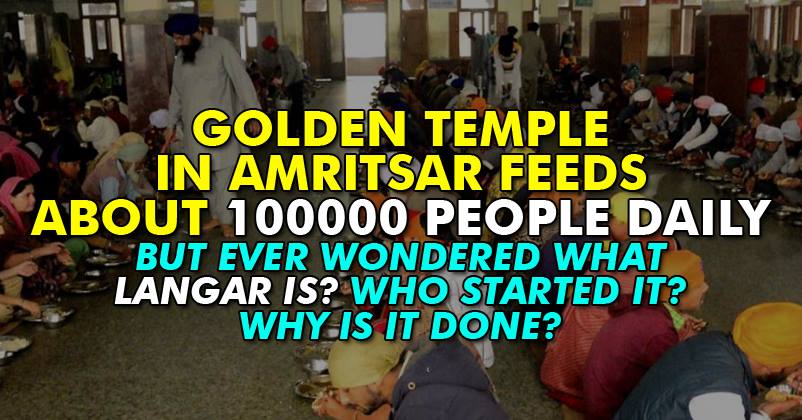You all are always excited to go to the Gurudwara, seek blessings of the lord and of course, enjoy that yummy Prasad i.e. “Langar”, isn’t it? We definitely relish this free meal, but not many of us know the reason and the story behind it. So wouldn’t you like to know how and why “Langar” became the greatest gift to humanity?
How it all started?
Langar is also aptly termed as “Free kitchen” and it was started in the year 1481, by Guru Nanak Dev Ji, the 1st Sikh Guru. The main reason for hosting this is to instill the value of equality between masses keeping aside social status, gender, age, color, and caste. Moreover, introduction of Langar was mainly to eradicate poverty and to ensure that every human in this world is fed properly, even if he is not in a position to afford food. It all started when Guru Nanak Dev ji’s father gave him Rs 20 and sent him to Lahore to start some trading business. However, on his way, Guru Nanak Dev ji came across some hungry saints, who hadn’t eaten since quite a few days. He could have easily ignored and left to Lahore for carrying out his business, but no, he showed humanity and preferred spending Rs 20 on getting some food items and cooking it for them.
However, when he returned home, he was severely punished by his father. Then once again, he was given a chance of working in a grain shop, but there too he preferred spending his earnings on the deprived and poor, without keeping even a penny for himself. However, he kept stressing on just one fact that if “Actual profits can be earned only if you do selfless service”. And this is how the concept of Langar got kickstarted…
This tradition was carried forward and was managed with equal willingness. Whenever the gurus travelled or whenever the people gathered, the wife of 2nd Guru Angad Dev, Mata Khivi ensured that Langar is provided. She actively participated in distribution of free meals to the poor and hungry.
Following this, people came together and made immense contribution to this, thereby giving rise to “Free kitchen of the Guru” which was based on 3 principles of Sikhism;
• Kirat Karo – Earning honest living
• Vand Chakko- Serving and sharing food
• Naam Japna- Chant the name of the lord while cooking the food, distributing or cleaning it up.
Then the 3rd Guru made it a formal affair!
The 3rd Guru, Amar Das made “Langar” a formal institution thereafter. However, it was framed of two main concepts;
• Pangat – Sitting together to eat as a family, regardless of caste or color. There is no discrimination whatsoever, when the “Pangat” sits to eat, everyone is equal.
• Sangat – Devotees influence others for an honest and truthful living. They gather together for chanting the name of “Guru”.
The hall!
No matter how small or big the Gurudwara is, there is always a separate space for Langar facility. In case of lavish Gurudwaras, there are separate areas, for storage of grains and food items, storage of utensils, cooking, serving and then washing the utensils.
The sevadharis!
Lakhs of people have come together to offer “Seva” i.e. selfless service towards this Langar. Yes, they don’t receive any monetary benefits; the only thing they receive is blessings and satisfaction. They serve every visitor with love and make sure that no one returns without eating properly. Volunteers take up several responsibilities like;
• Kneading the dough for around 1 lakh rotis daily, rolling and cooking them on tawas
• Peel, cut and boil vegetables
• Make ‘Dal’
• Distribute food to worshippers
• Washing utensils thereafter and cleaning up the dining area.
Why sit down and eat?
As we already mentioned above “Langar” focuses on equality. The poor can’t be raised to the level of rich people for just 1 meal and hence, rich have to come and sit down to the level of poor and eat food with them.









